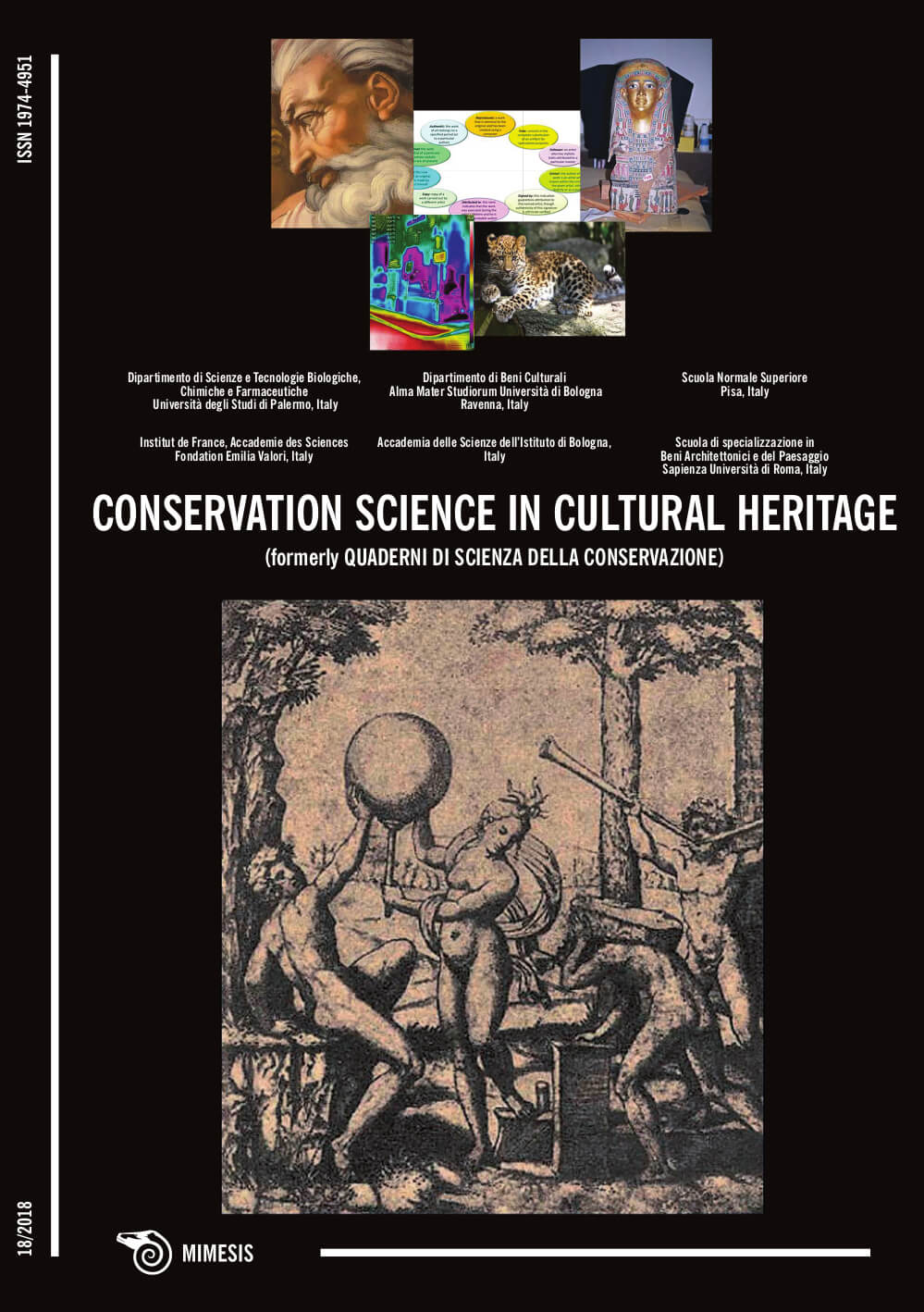Using Interdisciplinary Studies and Analyses in the Conservation of Greco-Roman Cartonnage
DOI:
https://doi.org/10.6092/issn.1973-9494/9236Keywords:
cartonnage, conservation, mummy, SEM-EDX, Egyptian blueAbstract
This paper describes the multi-analytical techniques and treatment processes that were undertaken in the conservation of two deteriorated cartonnages of the Greek- Roman period. Due to the lack of cartonnage specialists and the complicated nature of the restoration process, cartonnages within Egyptian museums and storage areas suffer from neglect and various other problems. The issue of cartonnage restoration is, so far, still a subject of scientific controversy. The research described in this paper dealt with the conservation and restoration of two mummy cartonnages found in Saqqara. Damage factors were identified and a biological study was conducted aimed at identifying the microorganisms that had led to biological infection. Furthermore, spot-stains caused by using resin in the mummification process were also inspected. Scanning electron microscopy (SEM-EDX), X-ray diffraction and Infrared (FTIR) results revealed the cartonnage components. It is clear from the spectra obtained with the blue colored sample that Egyptian blue was used. The white pigment composition appears as a combination of calcite and as calcium silicate mixed with aluminum silicate. FTIR revealed the presence of three layers of linen textile, which were made of layers of linen, and sometimes of papyrus, and mounted using animal glue. After examining the condition of the cartonnages and studying the results of the previous analysis, a treatment and restoration plan was developed and applied. Treatments included: strengthening the colors and weak parts, cleaning, removal of previous restoration materials and replacing the missing parts as well as preparing two new display holders.
Downloads
Published
How to Cite
Issue
Section
License
Copyright (c) 2018 Firas Alawneh, Abdel Rahman Elserogy, Eyad Almasri
Copyrights and publishing rights of all the texts on this journal belong to the respective authors without restrictions. Authors grant the journal right of first publication.
This journal is licensed under a Creative Commons Attribution 4.0 International License (full legal code).
See also our Open Access Policy.






